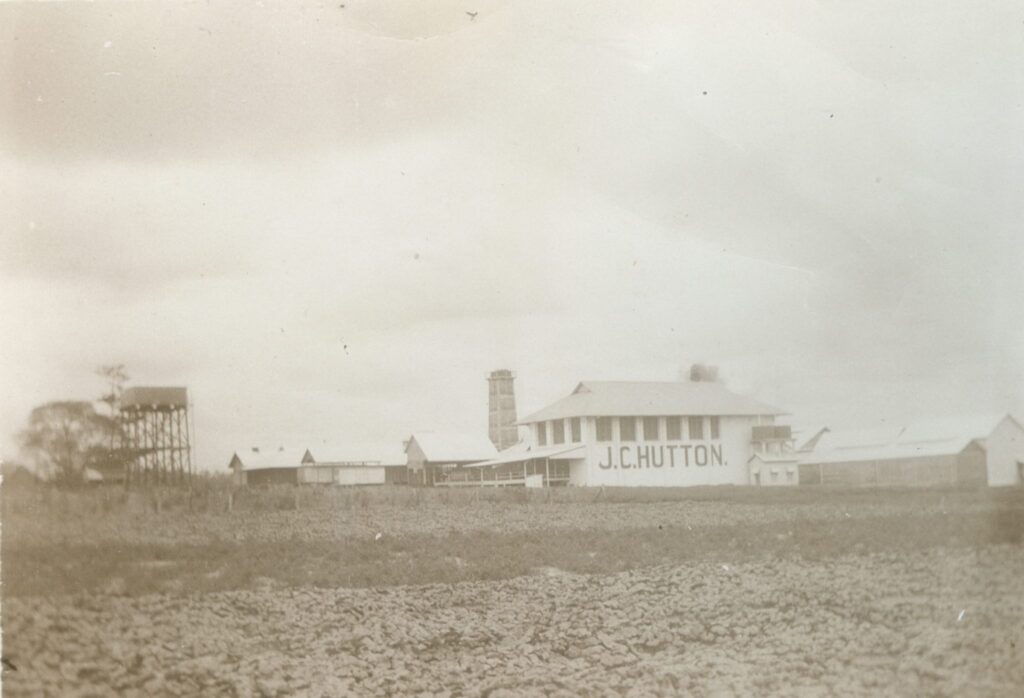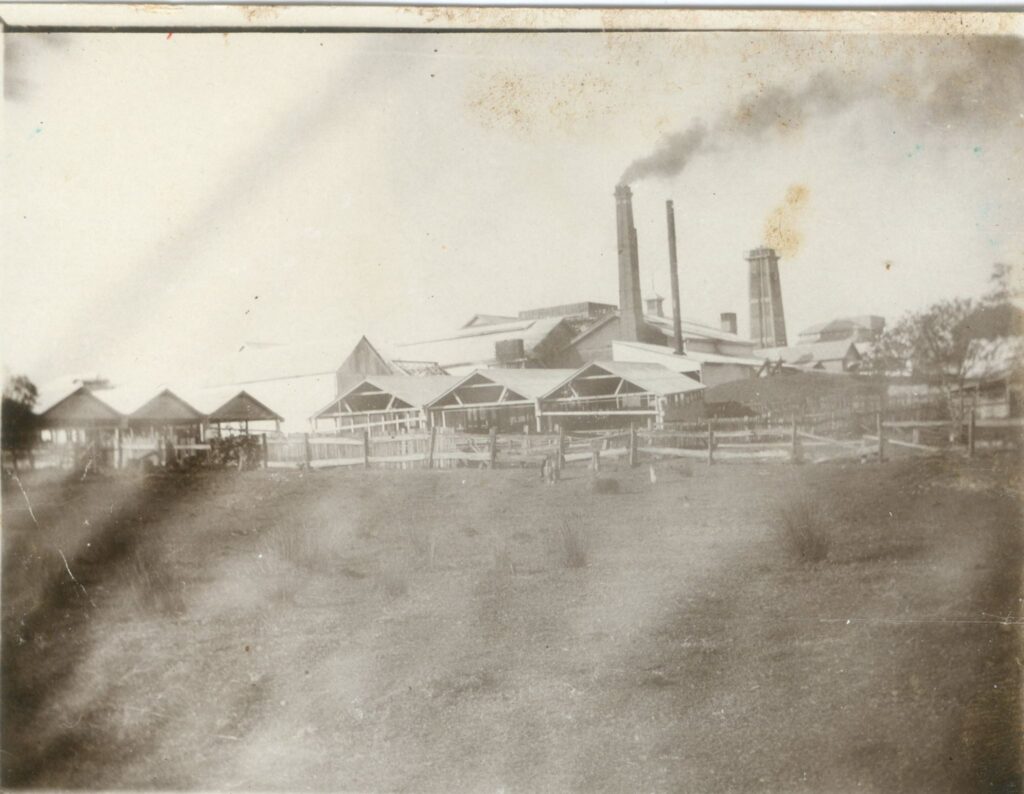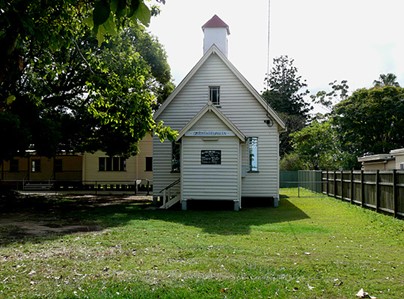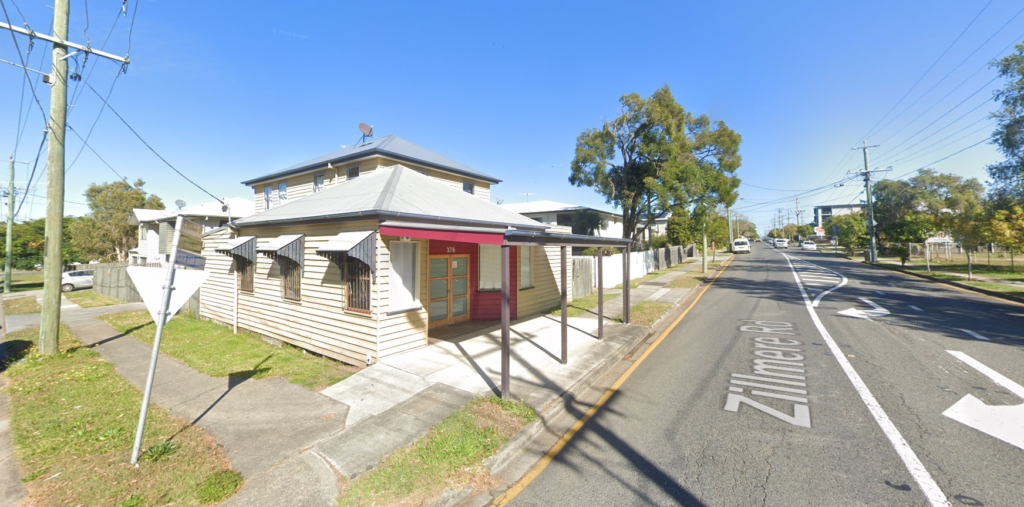Chermside & Districts Historical Society
Zillmere
Originally written by Pat O’Shea, 2010. Updated by Sherry Mackay, Julia van Zon, Bradley Scott, 2023.
Zillmere - an inner Northern Brisbane suburb
Zillmere, a suburb on the north eastern part of Brisbane, has a well-documented history of colonial settlement but our knowledge of the Turrbal people’s use of the area is limited.
The Turrbal people tribe lived and hunted in the Zillmere area long before colonial settlement. In the area later known as Zillman’s Water Holes, there was a plentiful supply of plant and animal food and people from many tribes would have gathered for tribal celebrations.
Lutheran missionaries arrived at German Station, later known as Nundah and set up their mission to the local Turrbal people in 1838. The missionaries, one of whom was Johann Leopold Zillman, were not farmers but had to support themselves on a property that was then a long way from the settlement of Brisbane.
Indigenous Australians worked for the missionaries but the efforts to convert them to Christianity were not successful. The mission failed and the missionaries began farming on their recently acquired land in the Zillmere area after J. L. Zillman had found his cattle wandering on prime grazing land.
The early settlers were farmers and as their numbers increased, they wanted to establish a school for their children. In 1875, Joseph Walsh Lee, as secretary to the School Committee wrote to the Board of Education outlining the need for a school, citing that about sixty families would send their children to the proposed school. He later sent a list of men who were suitable to be on the school committee – Frederick Shepherd, John L. Ward, Joseph Walsh Lee, Carl Stabe, Edward Rogers, Christian Schumaker, and William Duckworth. The Zillman Water Holes’ School opened on 22 January 1876 with 66 children enrolled. The school reached its peak numbers in the 1950s.
Zillmere demographics – population 9323 in 2021, an increase of 1318 (15.0%) since 2011. At 34, Zillmere’s median age is four years lower than the State median, and the median income is higher than that of Queensland as a whole.


Hutton’s Factory.
St John's Lutheran Church, Zillmere

The church building has undergone some changes since the 1860s and it is now the home of the Wilston Christadelphian Church.
First services were conducted at Zillmere, then known as Zillman’s Water Holes in 1850 by Pastor C. A. Schirmister of North Brisbane. A church of slab sides and shingle roof was built in 1865 and according to some researchers, it probably replaced a slab hut on Zillmere Road near the Church Road intersection. Some of the first families were Fester, Zillman, Werda, Stabe, Prackart, Beckmann, Muller, Hoehns, Duckwitz, Otto, and Carlsburg.
Pastor F. Copas from the Gossner Mission Society of Berlin arrived in 1866 and served less than a year before moving to Maryborough. Pastor Wilhelm Burghardt arrived in 1867 and stayed until 1873 when he accepted a call to Toowoomba. As no pastors were available, a layman, August Daniel Hartwig was appointed to take charge in 1873 and he was ordained as a pastor in 1875. It was during his time that the church in Church Road was built, in 1875.
Lutherans encouraged education for their children and Mr Brandenburg, a lay preacher, taught at the parish school and soon after, opened another congregation nearby. Pastor Mair united the two factions in 1877 and he stayed until 1886 when he went to Charters Towers. Pastors Egan, Burghardt, Hoefner, and Adler served the congregation over the next 39 years.
There were 150 members in 1925, 45 at the Sunday School and 70 members who were confirmed. In 1932; it cost the congregation $304 (£152) to extend the rear of the church.
By 1955, numbers in the Sunday School had grown. Many World War II army huts were available for re-use and the congregation bought one of these buildings. A builder re-erected the building and the congregation assisted with cladding and lining the building. The hall was opened on 10th October 1961.
Eric Holz of Zillmere supplied these details in the 1980s. His father arrived in Zillmere in 1887 and married in St John’s in 1902. His family was associated with the church until the late 1980s.
Zillmere Fabrics
Eileen Newberry worked at Myer’s Chermside store and then moved to Sullivan’s Drapery near the Zillmere railway station as manager. This job and the one at Myers gave her enough experience to consider setting up her own business. She went into partnership with her niece, Pat Robertson.
There was an empty shop in Zillmere Road that was available for a year at low rent and this allowed time to establish the business. Eileen and Pat each put in $2000 as capital for stock and fittings. This was the beginning of Zillmere Fabrics.
The landlord, who had other shops in Zillmere, offered the option of a larger shop with a better position in Handford Road, Zillmere. The partners accepted the offer and opened the new shop on 16 February 1966, the same day that decimal currency was introduced into Australia. Local painter, Harry Sketcher Baker, painted the shop.
It was a successful move, with new lines continually being added to the stock. The Chermside Drive-in Shopping Centre had opened in 1957 and was very popular with its variety of shops and new style of shopping but the ladies of Zillmere enjoyed calling at their own local shop where they were known by name and could have a chat as they browsed through fabrics, clothes, accessories, craft items and school uniforms. There was even an “alterations lady”, Ruby Taylor, employed to assist with the right fitting of garments if necessary.
Those were also the days when laybys were very popular and weekly payment on the goods made an excuse to call in at the shop for a quick chat and a catch-up with local news.
Zillmere Fabrics was one of a group of shops near the north-east corner of the intersection of Handford and Zillmere Roads. It was situated between Mary Clark’s Pharmacy and Comino’s Milk Bar.
On the corner of the intersection was the Shell garage owned by Steins. The railway line overpass was built during the time that Zillmere Fabrics was in business and it certainly opened these roads to more traffic. The Zillmere shopping area attracted customers from nearby Taigum and Bracken Ridge. Zillmere had five butcher shops at one stage.
Zillmere was also one of the northern suburbs chosen for redevelopment of farmlands in Government-funded housing schemes following World War II and hundreds of families moved to the district.
In retrospect, Zillmere Fabrics traded during the local shopping centre’s best years as the surrounding residents were not so mobile and were happy to patronise their local shops.
The partners threw a big party on their 10th anniversary complete with cake, balloons and streamers. The business continued for a few more years until Eileen decided to semi-retire and work on a part-time basis.
By 1986, Zillmere was surrounded by huge drive-in shopping centres in the neighbouring suburbs. The ladies had been trading for nearly 20 years and it was probably a good decision to close the business. Once again they decided to throw a party but this time it was in the form of a wake. The big sign on the wall of the now-empty shop read – WAKE IN MEMORY OF PAT, EILEEN AND ZILLMERE FABRICS.
Eileen and Pat held a customer reunion in March 2005 and many of their former customers came to reminisce about old times.
Excerpt from Marion Eaton’s interview with Eileen Newberry in 2003.

Customer reunion held on 19 March 2005 for people who had been associated with the fabric business. Many ex-customers regretted the passing of the shop from the Zillmere shopping centre.
Zillmere corner store
General Store at 380 Zillmere Road (corner of Jennings Street)
Charlie Millis was a widower living at Bulimba when he heard about the Zillmere General Store. He had worked for the Texaco Caltex Oil Company until his job became redundant with a change of ownership.
Charlie had been diagnosed with Paget’s Disease and as he had young Rita to care for since his wife’s death, he was very interested when his doctor told him about a business for sale at Zillmere that would have provided a job for Rita and himself and also included accommodation for both. After inspecting the shop on Zillmere Road, the move from Bulimba soon followed.
One of the customers of Charlie Millis in those days was a young man named Alan Kubler, a descendant of the pioneering family of Carl Stabe in Church Road. A romance blossomed between Rita Millis and Alan Kubler and they were married in 1945.
Bert Kubler, Alan’s father owned 5 acres on Church Road (ex-Robinson’s farm). Like many of the local landowners in the district, their farms were being turned over to the Government and developers for post-war housing, and the Kubler farm was sold to the Government for $1000.
Charlie Millis sold the store to Ernie Lewry and with the help of brother Tom the shop was quite viable for some time. Other owners were Rod & Mary Brewer who purchased it in October 1981 and sold in 1989.
Early photos show an awning on the front of the shop giving plenty of shade on the footpath. According to neighbours who lived there at the time, this awning was torn off by a fire engine racing to a fire. Apparently another vehicle travelling along Zillmere Road in the opposite direction did not leave enough room for the truck to clear the shop awning.
The shop eventually closed down for business and the premises became a private residence for some years. In September 2001 the property was vacated and put on the market and sold along with the older worker’s cottage next door. Both buildings had been painted up prior to the sale.
Excerpt from the interview by Marion Eaton with Rita in February 2001.

Corner store on Zillmere Road and Jennings Street. The Zillmere Library is on the opposite corner. This photo shows the store in its decline without awning, a boarded-up window and a dilapidated mien. It would appear to be a dwelling rather than a shop. c. 1989.

The Zillmere corner store in 2021 courtesy of Google Maps.
